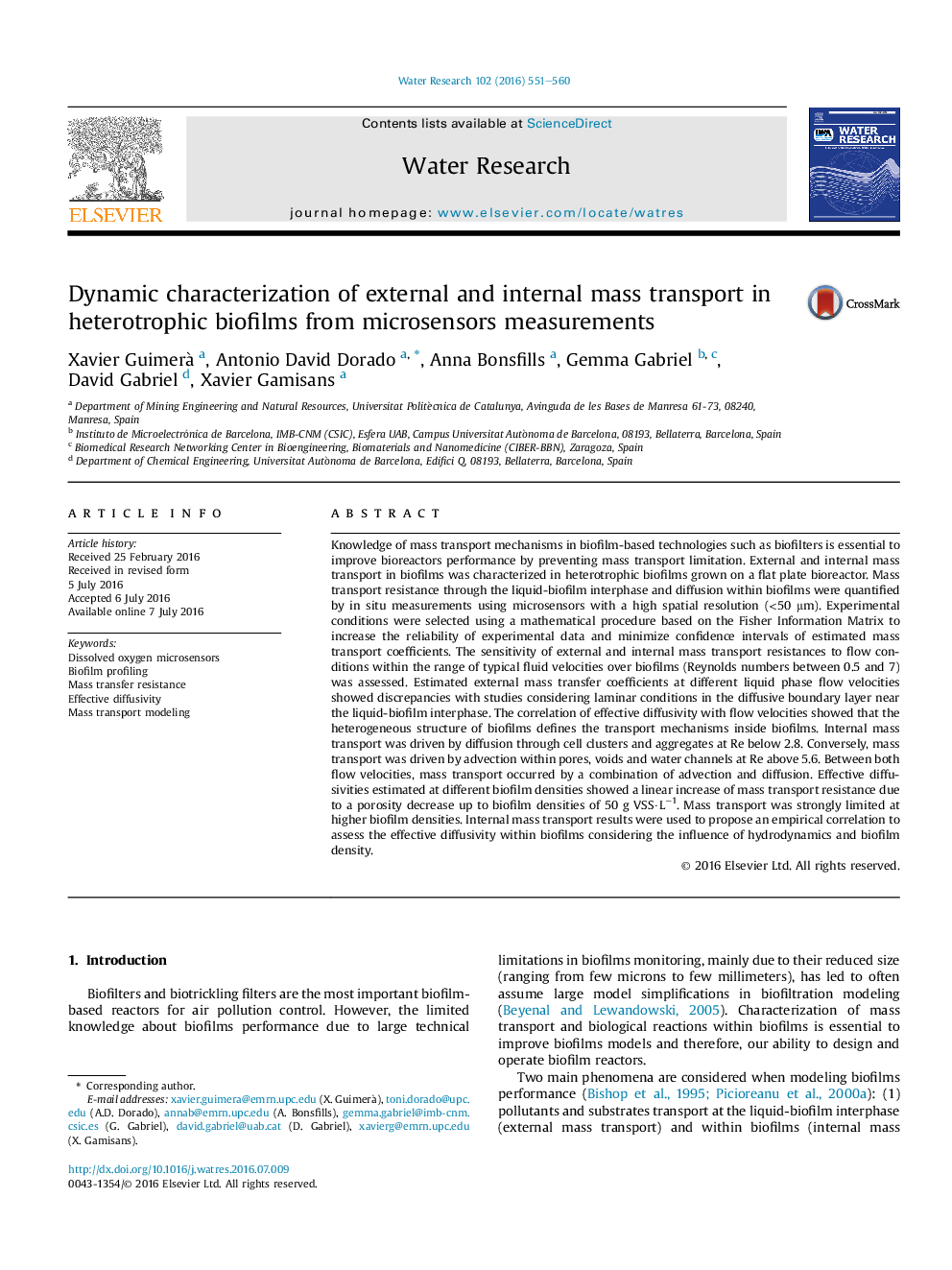| Article ID | Journal | Published Year | Pages | File Type |
|---|---|---|---|---|
| 4480886 | Water Research | 2016 | 10 Pages |
•Mass transport resistance and diffusion within biofilms were quantified by in situ measurements.•The sensitivity of external and internal mass transport resistances to flow conditions is assessed.•External mass transport shows a clear dependence on hydrodynamic conditions.•Internal mass transport is driven by diffusive mechanisms through cell aggregates.•Internal mass transport is driven by convective mechanisms through water channels.
Knowledge of mass transport mechanisms in biofilm-based technologies such as biofilters is essential to improve bioreactors performance by preventing mass transport limitation. External and internal mass transport in biofilms was characterized in heterotrophic biofilms grown on a flat plate bioreactor. Mass transport resistance through the liquid-biofilm interphase and diffusion within biofilms were quantified by in situ measurements using microsensors with a high spatial resolution (<50 μm). Experimental conditions were selected using a mathematical procedure based on the Fisher Information Matrix to increase the reliability of experimental data and minimize confidence intervals of estimated mass transport coefficients. The sensitivity of external and internal mass transport resistances to flow conditions within the range of typical fluid velocities over biofilms (Reynolds numbers between 0.5 and 7) was assessed. Estimated external mass transfer coefficients at different liquid phase flow velocities showed discrepancies with studies considering laminar conditions in the diffusive boundary layer near the liquid-biofilm interphase. The correlation of effective diffusivity with flow velocities showed that the heterogeneous structure of biofilms defines the transport mechanisms inside biofilms. Internal mass transport was driven by diffusion through cell clusters and aggregates at Re below 2.8. Conversely, mass transport was driven by advection within pores, voids and water channels at Re above 5.6. Between both flow velocities, mass transport occurred by a combination of advection and diffusion. Effective diffusivities estimated at different biofilm densities showed a linear increase of mass transport resistance due to a porosity decrease up to biofilm densities of 50 g VSS·L−1. Mass transport was strongly limited at higher biofilm densities. Internal mass transport results were used to propose an empirical correlation to assess the effective diffusivity within biofilms considering the influence of hydrodynamics and biofilm density.
Graphical abstractFigure optionsDownload full-size imageDownload high-quality image (173 K)Download as PowerPoint slide
